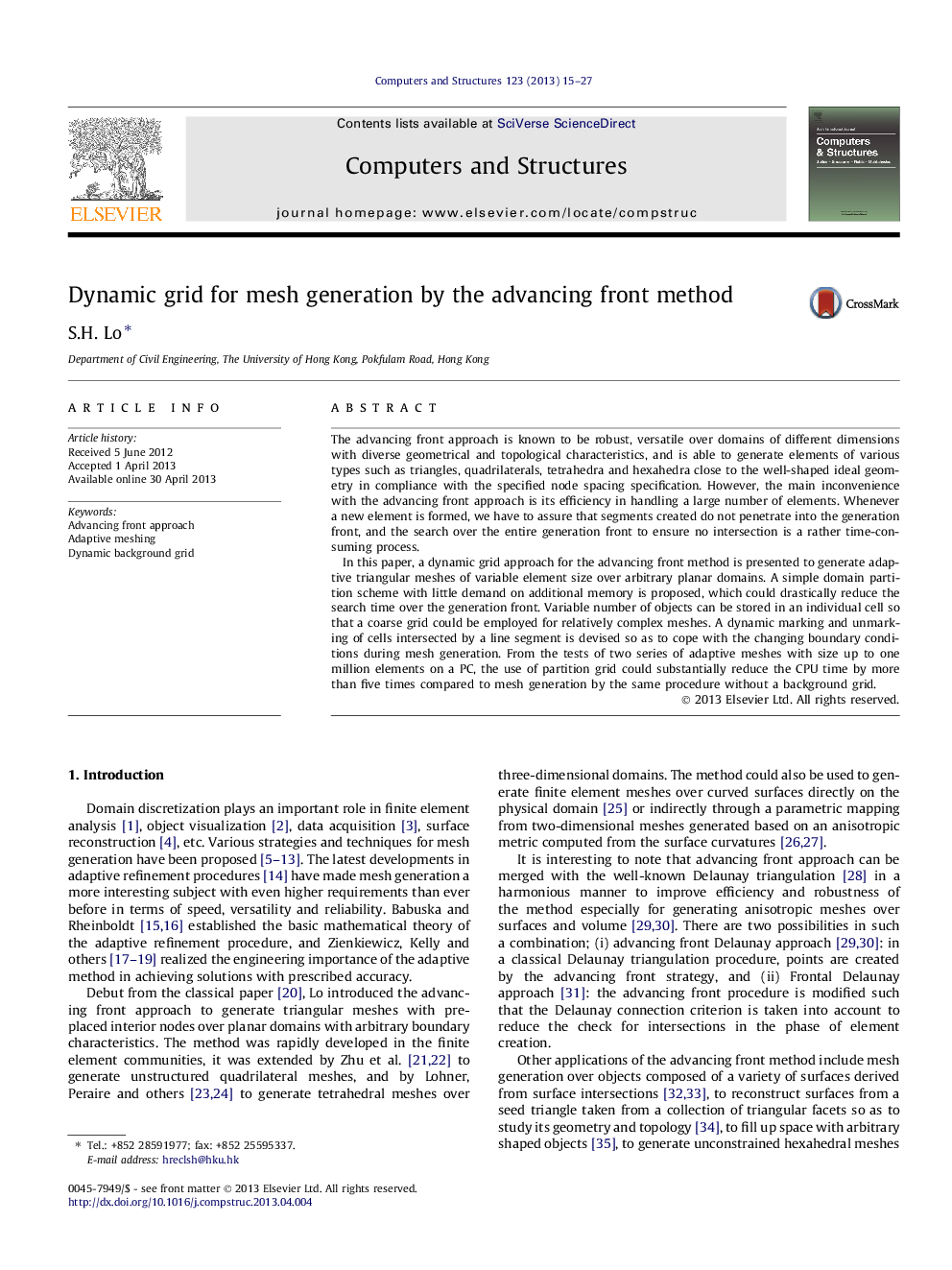| کد مقاله | کد نشریه | سال انتشار | مقاله انگلیسی | نسخه تمام متن |
|---|---|---|---|---|
| 510384 | 865763 | 2013 | 13 صفحه PDF | دانلود رایگان |

• Advancing front method is systematically presented for adaptive meshing.
• A background grid with variable storage in each cell is proposed.
• A dynamic marking and unmarking of cells is devised to tackle changing boundary.
• The performance of the scheme is tested with two series of mesh refinements.
• Application to two practical adaptive analyses is also presented.
The advancing front approach is known to be robust, versatile over domains of different dimensions with diverse geometrical and topological characteristics, and is able to generate elements of various types such as triangles, quadrilaterals, tetrahedra and hexahedra close to the well-shaped ideal geometry in compliance with the specified node spacing specification. However, the main inconvenience with the advancing front approach is its efficiency in handling a large number of elements. Whenever a new element is formed, we have to assure that segments created do not penetrate into the generation front, and the search over the entire generation front to ensure no intersection is a rather time-consuming process.In this paper, a dynamic grid approach for the advancing front method is presented to generate adaptive triangular meshes of variable element size over arbitrary planar domains. A simple domain partition scheme with little demand on additional memory is proposed, which could drastically reduce the search time over the generation front. Variable number of objects can be stored in an individual cell so that a coarse grid could be employed for relatively complex meshes. A dynamic marking and unmarking of cells intersected by a line segment is devised so as to cope with the changing boundary conditions during mesh generation. From the tests of two series of adaptive meshes with size up to one million elements on a PC, the use of partition grid could substantially reduce the CPU time by more than five times compared to mesh generation by the same procedure without a background grid.
Journal: Computers & Structures - Volume 123, July 2013, Pages 15–27